Let me first start by explaining I have purposely avoid the term, EdTech or educational technology in the title for this post. I thought that would muddy the waters before I even started, so instead I will refer to and discuss technology in schools.
The challenge here is that the subject in hand is complex and pretty broad in its impact on education. As such I think it therefore is important to state this thought piece is unlikely to capture the true complexities of the situation. It can offer nothing more than a simplified viewpoint. But in offering that simplified viewpoint maybe, just maybe, I will offer something which others find useful.
So where to start?
I think the place to start is by trying to break down technology in education into a number of interrelated parts. I note here, that the purpose of breaking down the technology in education concept is to aid with understanding and for clarity reasons, not because the distinctions I propose exist in any hard real terms. I also need to stress the interrelationship and interdependence which exists among these parts.
So how might technology in education be broken down?
I would suggest the below areas:
- Learning about technology
- Teaching with technology
- Learning through technology / Technology enabled learning
- Assessment through technology
Lets have a look at the first two items which I think are the most critical, starting with the top one and most likely the easiest one.
Learning about Technology
This is in relation to how we teach students about technology. In the past this might have been the Key Stage 3 IT curriculum, or in more recent times Computing, or it might be teaching students about the benefits and dangers of social media via Digital Literacy lessons. This is where the learning outcomes are clearly related to technology related skills, knowledge and understanding.
The issue with our current setup, in my view, is that the Computing offering is far to specialist for most students, and the reduction in student numbers taking GCSE Computing or IT seems to be indicative of this. When IT was removed the students didn’t move over to take Computing but instead went to other subject areas. Additionally the IT qualification, which was removed at KS3, provided students a lot of the basic IT skills plus also provided an opportunity for Digital Literacy to be covered; Without IT it is down to schools themselves to choose and to find time to cover these areas, with not all schools doing so in any real meaningful way.
In terms of my suggestion for this area I think Ian Yorston put forward a good suggestion via Twitter with Computing becoming Computer Science and joining the other sciences as part of the core offering. This therefore retains an element of computational thinking within the curriculum including in Primary education. Computing would still then, like the other sciences, be offered as a separate specialist subject at GCSE/A-Level. This would obviously require the science curriculum to be looked at as the time available would be split 4 ways rather than the current 3-way split.
In addition to the above there is a need to deal with the basics of technology. Given previous perceptions of the old IT current I don’t think IT or ICT would be appropriate names. I would go for Digital Literacy. This would cover some of the basic of technology use, must in the same way that English lessons start with the basics of the written and spoken word. It would then develop as students progressed through school to cover more complex issues such a the impact of big data, ethics and AI, and how social media can influence the general public, much again in the same way as English develops to eventually cover an appreciation of poetry and more complexity literary theory.
Teaching with technology
This area is most likely the one which most might refer to as using Educational Technology. Here the learning outcomes can be related to maths, geography, history or any other subject you can think of. The technology learning isnt the endpoint, but technology is a tool used by the teacher and students to get to their endpoint.
The key current challenges as I see then are investment and professional development. Schools cannot make use of educational technology if they simply don’t have access to it and access to educational technology continues to be highly variable across schools. It is also important to acknowledge that the technology in question needs to be reliable and also come with adequate technical support for when things invariably don’t quite work as they should.
Professional development is also key as having the tools available is not enough if staff don’t know how to use it. Now my belief is that the professional development question goes much further than simply having access to it as I have seen many professional development courses which have had limited long-term impact. The professional development available needs to be of high quality but additionally, and more importantly in my view, it needs to be underpinned by a school culture of continual improvement, of sharing or openness. If the culture is right then internal self-fulfilling professional development, occasionally supplemented with outside visits or training, can be achieved.
Another related issue to be considered here has to be Initial Teacher Training (ITT). Developing the knowledge, understanding and skills of new teachers in relation to how they can effectively use technology will be key in the longer term, as these new teachers join schools and eventually become the backbone and leadership teams of schools of the future.
The Challenge
The challenge in all of the above is the scale of the problem. Changes to the curriculum, time to adapt to a new curriculum, professional development, infrastructure investment, etc are easy to write about on Twitter or in a blog like this however to make it happen is so much more difficult. There will be those who oppose curriculum changes due to it being a departure from “traditional” education. There will be those who see investment as diverting funds from other government priorities. There will be those who are concerned that yet more educational changes would be disruptive. There will be the issue of the actual timeline as changes would take time.
Change is never easy.
It also needs to be acknowledged that this change needs to be backed at the highest levels of government, of the educational authorities such as Ofqual and ner I say it, Ofsted. This potentially makes the proposed changes political, meaning the good of education may be sacrificed in the interests of gaining or retaining political office.
So what are we to do?
We could continue our current approach doing the best we can in our own schools, while coming together in groups wherever possible to proclaim the need for change. I see this as the default position. It may not quickly get us where I believe we need to go but as we share our thoughts and views I hope that momentum will build with regards the need for change.
We could decide to focus on one particular area, such as teaching about technology or teaching with technology, thereby allowing efforts to be more focussed. The issue here is that this may lead to a lack of big picture planning and eventual inefficiencies or even issues resulting from overlaps in concepts or differing viewpoints over time. That said, could we consider any progress made to be progress, irrespective of any issues which may, and I highlight, may, occur in the future.
I am not sure what the answer is. I am not even sure there is an answer however I am sure there is a need for change.
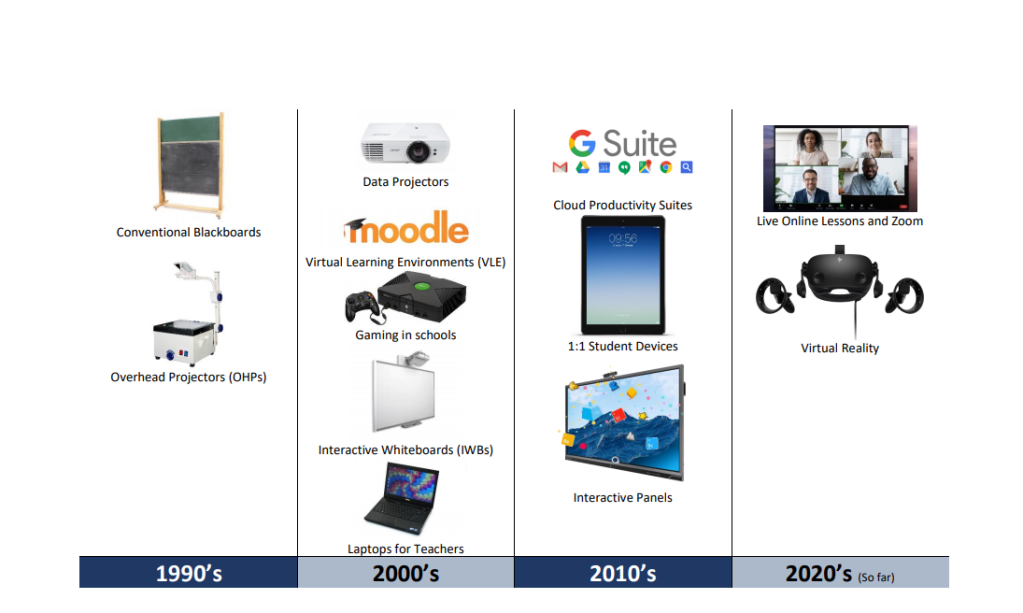



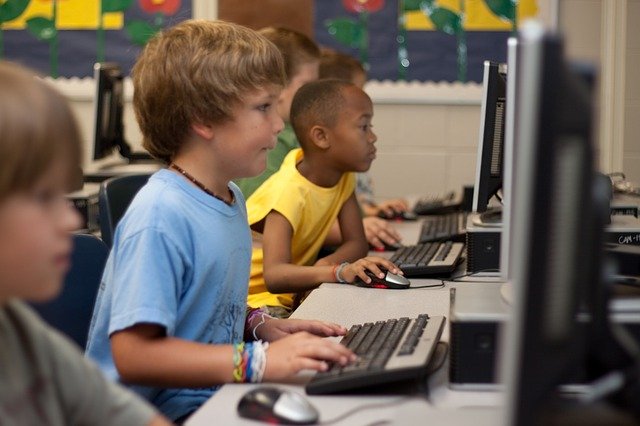
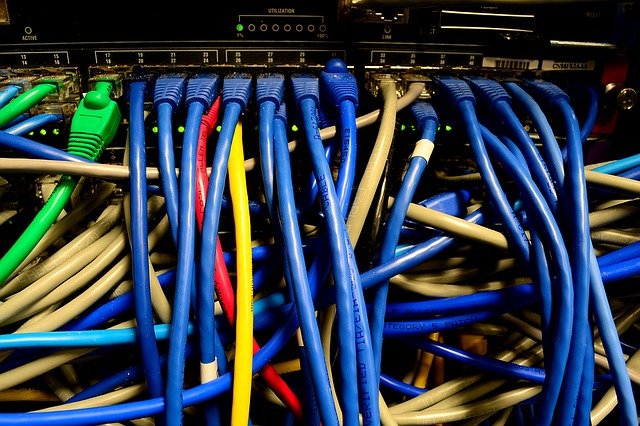
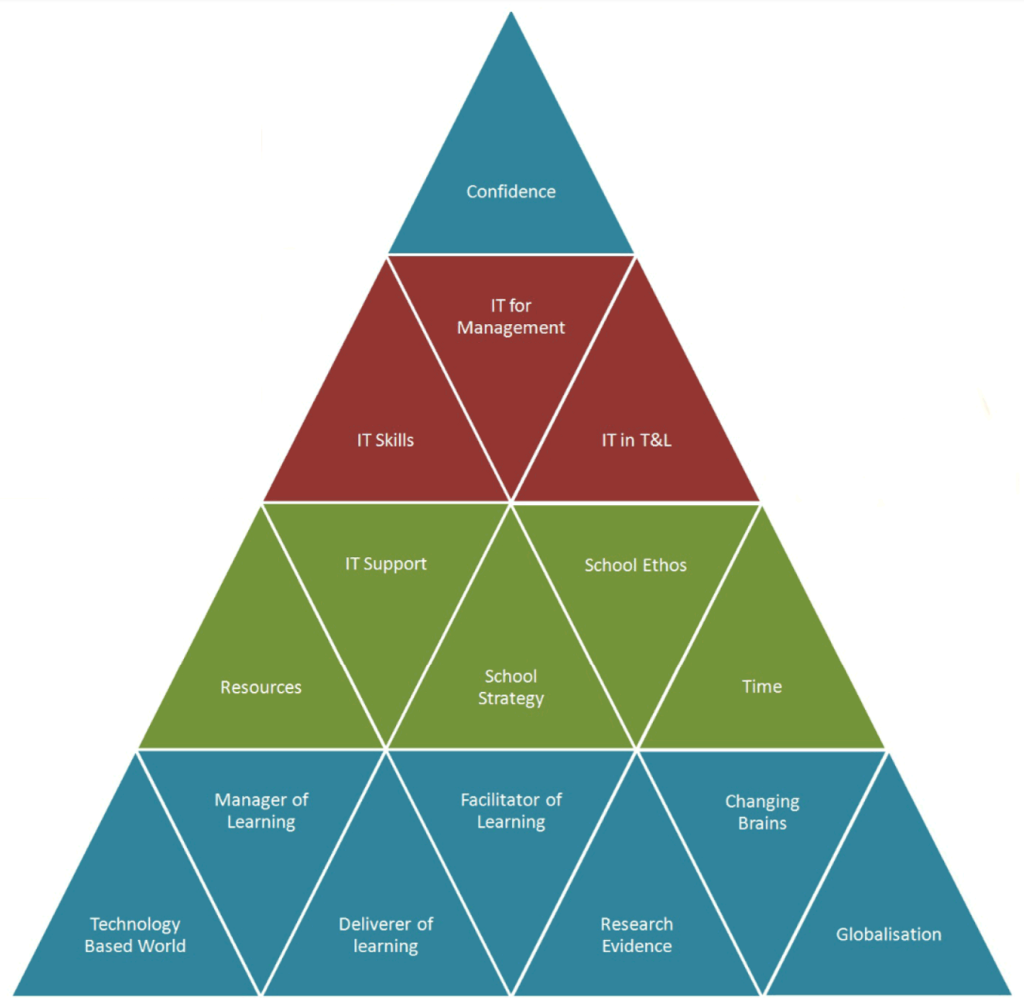

 Over the last week or so since schools closed teachers who previously hadn’t had much experience of creating video learning content have suddenly found themselves creating content. Some of this video has been live through Zoom, Hangouts or Teams, or has been posted for on demand access through YouTube, Facebook, Twitter, FlipGrid and even TikTok or through school Virtual Learning Environments. Although discussions of flipped or blended learning have been ongoing for some time, Covid-19 has led to a peak in interest plus to a rapid upskilling of teachers driven by a specific and immediate need. With this greater interest and skill level I would predict that we will see greater use of video, and in particular pre-prepared video which can be used or accessed on demand within schools and learning, similar to the lecture capture concept which has become more common in Higher Education.
Over the last week or so since schools closed teachers who previously hadn’t had much experience of creating video learning content have suddenly found themselves creating content. Some of this video has been live through Zoom, Hangouts or Teams, or has been posted for on demand access through YouTube, Facebook, Twitter, FlipGrid and even TikTok or through school Virtual Learning Environments. Although discussions of flipped or blended learning have been ongoing for some time, Covid-19 has led to a peak in interest plus to a rapid upskilling of teachers driven by a specific and immediate need. With this greater interest and skill level I would predict that we will see greater use of video, and in particular pre-prepared video which can be used or accessed on demand within schools and learning, similar to the lecture capture concept which has become more common in Higher Education.
 For me our students online social media habits have to date been seen in a very negative light, being thought of as being anti-social or changing in their behaviour or attention spans. The last week has however shown how the online world can provide opportunities for socialising as much as the real world can, albeit in different ways. We have seen virtual pubs, lots of online Karaoke, community groups and much more form quickly online to overcome the challenges of social distancing and the potential harm of individual isolation. Thinking about children, and how parents may be overprotective and concerned of the dangers in the real world, therefore leading our students to be more isolated than they would have been in the past; For me I remember parental comments about returning home “before the street lights come on”. This kind of freedom to socialise in real life isn’t afforded in anyway to the same extent for the current generation of children. Is it therefore any wonder they would look to use the online world? I think going forward there will be a greater acceptance of the benefits of the hyper connectedness which our students already experience through the many apps they use.
For me our students online social media habits have to date been seen in a very negative light, being thought of as being anti-social or changing in their behaviour or attention spans. The last week has however shown how the online world can provide opportunities for socialising as much as the real world can, albeit in different ways. We have seen virtual pubs, lots of online Karaoke, community groups and much more form quickly online to overcome the challenges of social distancing and the potential harm of individual isolation. Thinking about children, and how parents may be overprotective and concerned of the dangers in the real world, therefore leading our students to be more isolated than they would have been in the past; For me I remember parental comments about returning home “before the street lights come on”. This kind of freedom to socialise in real life isn’t afforded in anyway to the same extent for the current generation of children. Is it therefore any wonder they would look to use the online world? I think going forward there will be a greater acceptance of the benefits of the hyper connectedness which our students already experience through the many apps they use. Although most of the above is positive I do have some concerns. I am worried that as people rushed to find solutions to overcome isolation, maintain social connection, etc, that they didn’t show due care for the protection of their personal data and for the resultant cyber risk. Great communities may have formed overnight using free services but what data did we give away regarding these groups and the individuals within them. It worries me that when things do settle down, we may realise that some decisions made have negative consequences. I suspect the pendulum which swings between individual privacy and public good, and which previously tended towards individual privacy may have shifted somewhat and may now tend more towards the public good. In some ways this may be a good thing, but what may be a good thing in a crisis may not be a good thing when everything returns to normality or near normality.
Although most of the above is positive I do have some concerns. I am worried that as people rushed to find solutions to overcome isolation, maintain social connection, etc, that they didn’t show due care for the protection of their personal data and for the resultant cyber risk. Great communities may have formed overnight using free services but what data did we give away regarding these groups and the individuals within them. It worries me that when things do settle down, we may realise that some decisions made have negative consequences. I suspect the pendulum which swings between individual privacy and public good, and which previously tended towards individual privacy may have shifted somewhat and may now tend more towards the public good. In some ways this may be a good thing, but what may be a good thing in a crisis may not be a good thing when everything returns to normality or near normality.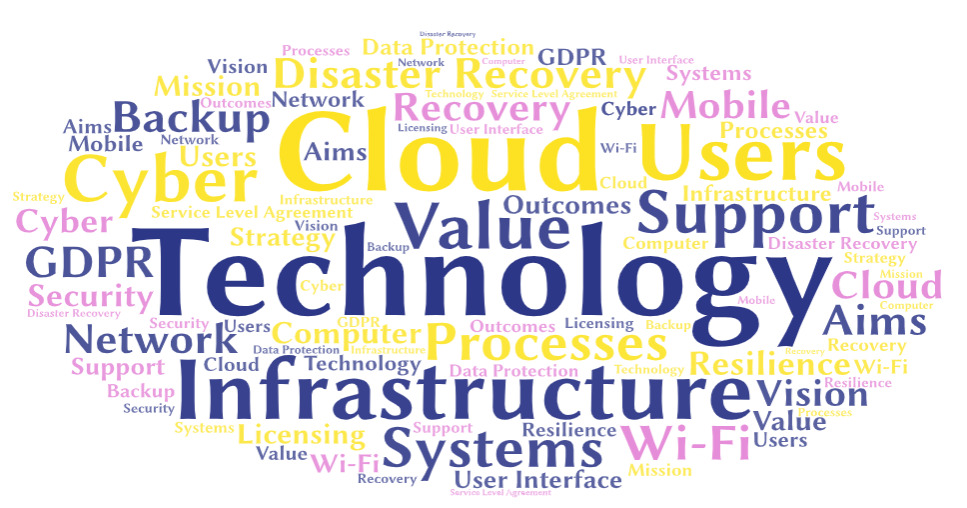 I have been planning to post on IT strategy in relation to some of the areas which I believe need to be considered. Initially my thought was for a single post covering a number of different points, some being obvious and some less so obvious, however as soon as I started writing it became clear that each point could be a post in itself or would result in a really long single post. As such I decided to undertake a number of separate posts of which this is the first:
I have been planning to post on IT strategy in relation to some of the areas which I believe need to be considered. Initially my thought was for a single post covering a number of different points, some being obvious and some less so obvious, however as soon as I started writing it became clear that each point could be a post in itself or would result in a really long single post. As such I decided to undertake a number of separate posts of which this is the first: I remember someone telling me that IT is the 3rd most expensive thing in a school after staffing costs and the cost of the building and school estate. With such a large part of a schools finances invested in technology it is important to make sure that we are getting value. Now I note my use of the word “value” as opposed to impact; This is due to impact being often associated with examination outcomes. In my view this is a narrow view on technologies potential within education. Exam results, for example, don’t provide a measure of the positive effect which technology can have to a student with Asperger’s who previously found it difficult to interact with the classroom discussion but now can do so easily via an online chat facility. For me value suggests a broader classification which might include using technology to engage a particular student who previously wouldn’t or couldn’t access learning, like in the above example, it might include introducing new experiences to students which were either difficult, dangerous or costly without tech or it might be using technology to bring about new more efficient processes for teachers such as dictation of feedback, etc. Value is much more diverse and also context specific than exam results. Seeking value in our technology should be a key objective in all technology decision making but mustn’t be confused with cost cutting.
I remember someone telling me that IT is the 3rd most expensive thing in a school after staffing costs and the cost of the building and school estate. With such a large part of a schools finances invested in technology it is important to make sure that we are getting value. Now I note my use of the word “value” as opposed to impact; This is due to impact being often associated with examination outcomes. In my view this is a narrow view on technologies potential within education. Exam results, for example, don’t provide a measure of the positive effect which technology can have to a student with Asperger’s who previously found it difficult to interact with the classroom discussion but now can do so easily via an online chat facility. For me value suggests a broader classification which might include using technology to engage a particular student who previously wouldn’t or couldn’t access learning, like in the above example, it might include introducing new experiences to students which were either difficult, dangerous or costly without tech or it might be using technology to bring about new more efficient processes for teachers such as dictation of feedback, etc. Value is much more diverse and also context specific than exam results. Seeking value in our technology should be a key objective in all technology decision making but mustn’t be confused with cost cutting.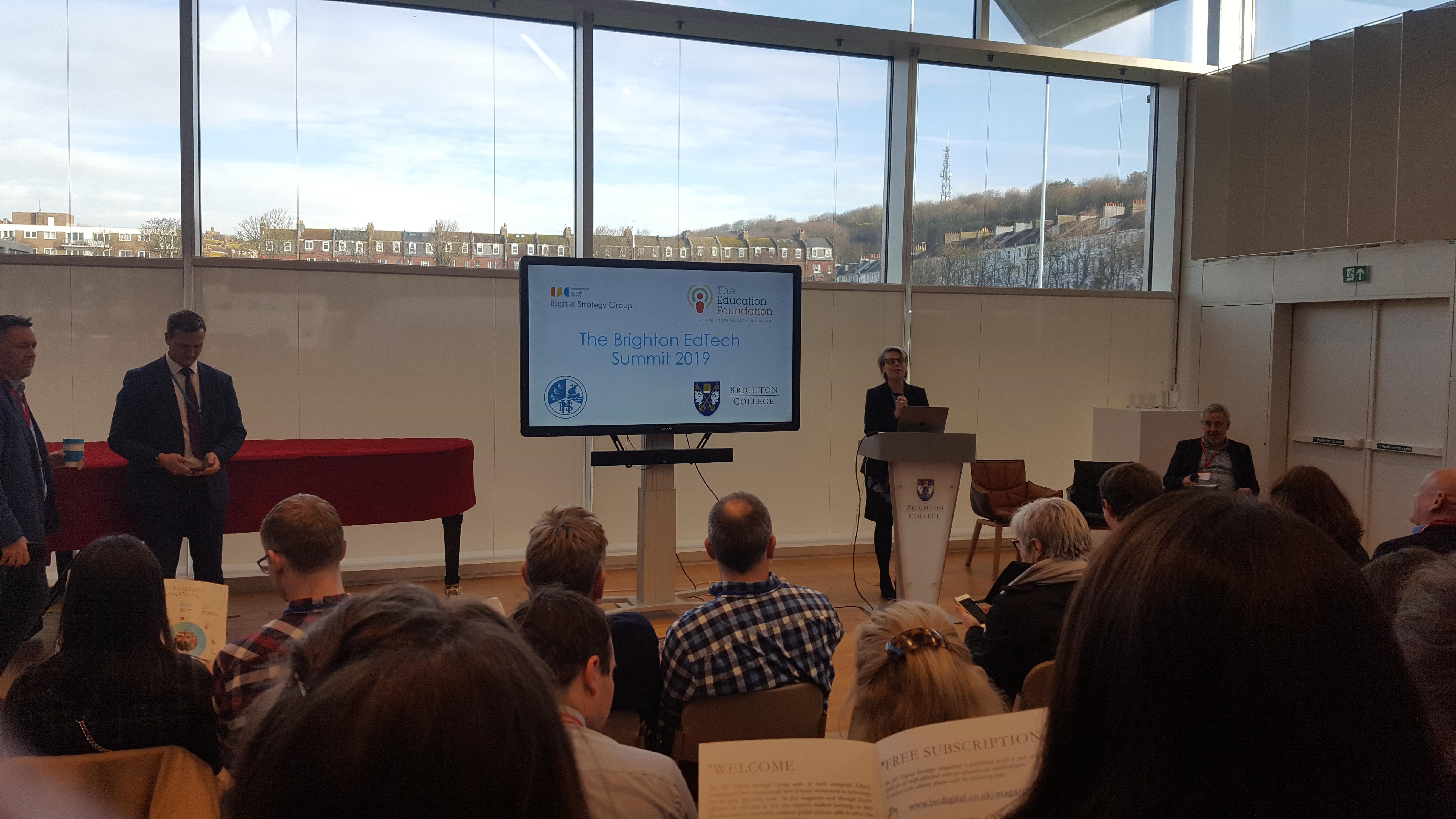 The need for sharing and collaborating across schools was the key message I took away from the Brighton ISC EdTech Summit last week. We need to share what works, the challenges, the successes, the approaches and the journeys taken. It is only through this sharing we can be more consistent and effective in our use of EdTech.
The need for sharing and collaborating across schools was the key message I took away from the Brighton ISC EdTech Summit last week. We need to share what works, the challenges, the successes, the approaches and the journeys taken. It is only through this sharing we can be more consistent and effective in our use of EdTech. Now before I go any further I need to get the journey off my chest. A 3 train journey on the way to Brighton including a rush to the 2nd train following a delay on train number 1, followed by missing my planned homeward bound train, which would have been a 2 train journey, and therefore requiring a 4 train trip. Am not the best traveller on trains especially when no seat is available and the above pushed me to the limit of my patience. All this plus taxis, so total travel of 7 trains and 4 taxis. But enough of that, now I have it off my chest, the key thing was the conference itself.
Now before I go any further I need to get the journey off my chest. A 3 train journey on the way to Brighton including a rush to the 2nd train following a delay on train number 1, followed by missing my planned homeward bound train, which would have been a 2 train journey, and therefore requiring a 4 train trip. Am not the best traveller on trains especially when no seat is available and the above pushed me to the limit of my patience. All this plus taxis, so total travel of 7 trains and 4 taxis. But enough of that, now I have it off my chest, the key thing was the conference itself.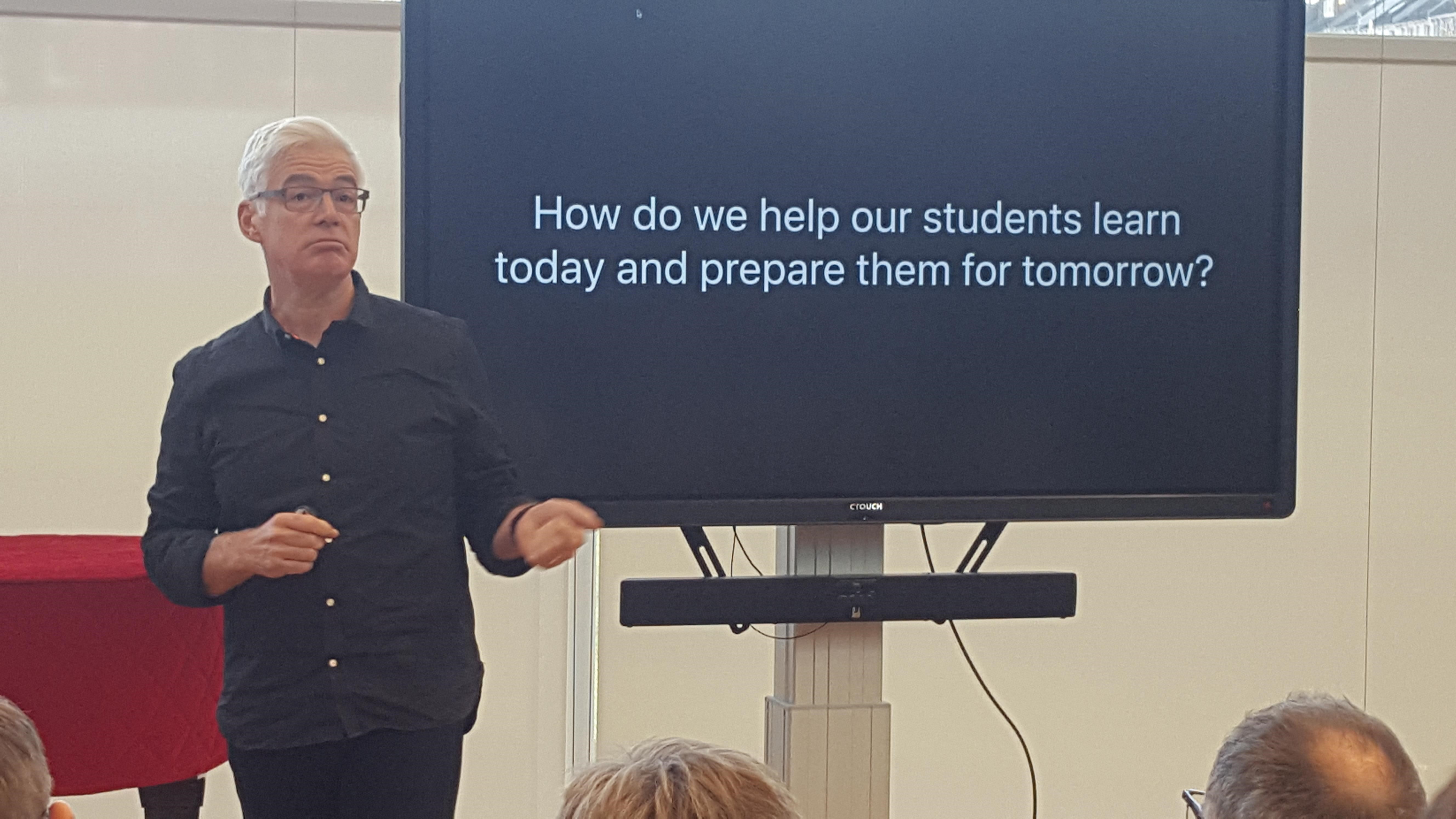 Richard Teversham from Apple was next up highlighting the fact that we now live in a world where every job is a technology job. I particularly liked his explanation of how we were in the third age, a people age, and that it was people first, before technology. My own experience seems to agree with this. Technology is great but it needs someone to understand how it might be used and how it might benefit teaching and learning, then it needs someone to actually use it. It needs people and these people need to be motivated and interested in how the technology might enable learners, they also need to see the potential. In relation to potential Richard explained that “with technology great things can happen” and I tend to agree.
Richard Teversham from Apple was next up highlighting the fact that we now live in a world where every job is a technology job. I particularly liked his explanation of how we were in the third age, a people age, and that it was people first, before technology. My own experience seems to agree with this. Technology is great but it needs someone to understand how it might be used and how it might benefit teaching and learning, then it needs someone to actually use it. It needs people and these people need to be motivated and interested in how the technology might enable learners, they also need to see the potential. In relation to potential Richard explained that “with technology great things can happen” and I tend to agree.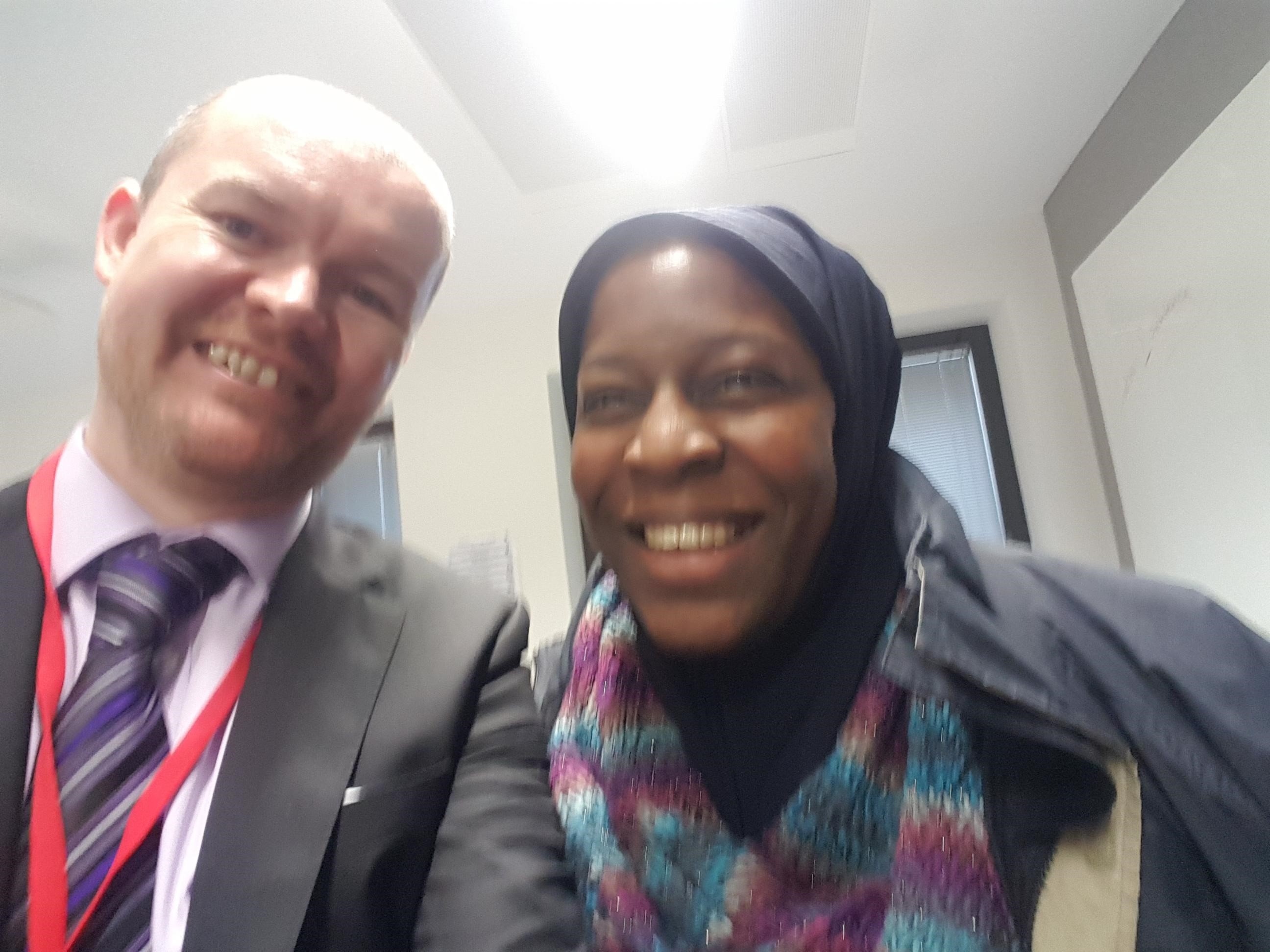
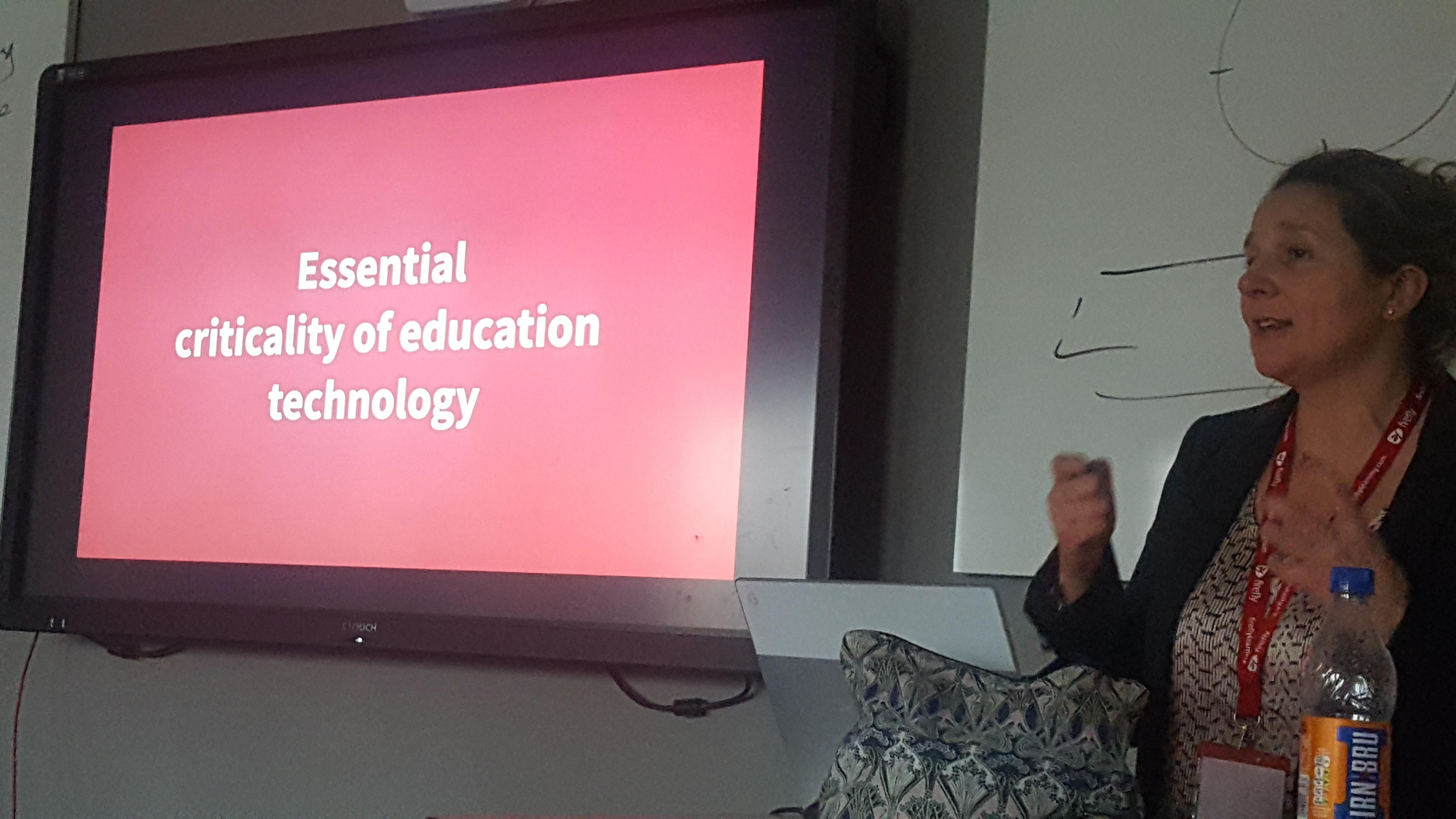 The conference also provided me the opportunity to present and I had the pleasure of presenting with Louise Jones, a fellow Scot. Her session was a bit of an eye opener particularly when she discussed “voice first” and raised the issue that traditional web searches return 1000’s of answers, but when you ask Alexa you will get only a single answer; As such what are the implications for our learners where they are likely to increasingly make use of voice first services? The existence of free web services was also raised and how we need to increasingly ask ourselves why a given service is free and how the service provider is themselves benefiting; few companies create a service, at their own cost, just for the good of society. I also liked her discussion of how version history and meta data, and the ability to replay the creation of documents by students might surface information in relation to the students thinking processes.
The conference also provided me the opportunity to present and I had the pleasure of presenting with Louise Jones, a fellow Scot. Her session was a bit of an eye opener particularly when she discussed “voice first” and raised the issue that traditional web searches return 1000’s of answers, but when you ask Alexa you will get only a single answer; As such what are the implications for our learners where they are likely to increasingly make use of voice first services? The existence of free web services was also raised and how we need to increasingly ask ourselves why a given service is free and how the service provider is themselves benefiting; few companies create a service, at their own cost, just for the good of society. I also liked her discussion of how version history and meta data, and the ability to replay the creation of documents by students might surface information in relation to the students thinking processes. Personalisation is a term which is used reasonably frequently in education circles as a goal we should seek. The ability to provide students with educational experiences which are suited to their needs, abilities and wants. Technology is helping us progress towards this.
Personalisation is a term which is used reasonably frequently in education circles as a goal we should seek. The ability to provide students with educational experiences which are suited to their needs, abilities and wants. Technology is helping us progress towards this.